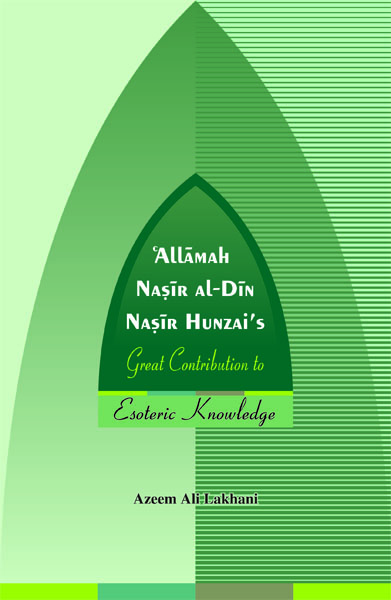Great Contribution to Esoteric Knowledge
Excerpt:
Although he was born in a family which according to that time was considered learned, because his father Ḥubb-i ‘Ali and grandfather Muḥammad Rafi’ were the Khalīfahs or representatives of their respective Pīrs, the standard of the Khalīfahs’ knowledge was so limited that they were unable to produce any literary works. Therefore, prior to him there is no trace of any religious literature in Hunza. Four years prior to his birth in 1917, the British colonial government had established the only primary school in the capital of Hunza, Baltit. He studied there for ten months during which he completed the third and fourth classes and that was the measure of his entire secular education! However, by God’s special help, through self-study he advanced in his learning so rapidly that in 1940 he was able to compose perfect poetry with all its requirements of metre, rhyme etc. Thus started the journey of his esoteric writings with the epoch-making ginan, which he, with the ardour of the fire of love, composed in Burushaski in praise of the Imām of the time, Mawlānā Sulṭān Muḥammad Shāh (fadāhu arwāḥunā). This poem was the first of its kind in the Burushaski language. In it he says:
Haazir Imaame iśqe fuwan jaa asar balii
Haazir Imaam jaa gaale malyam jaa asar milii
The fire of Hāz̤ir Imām’s love is kindled in my heart,
Hāz̤ir Imām is the ointment for my wound, my heart’s medicine.
In the same blessed year of 1940, the Imām of the time had sent a sacred message through the Radio that the light of his kindness and love would reach the entire Jamā’at of Hunza like the sun. The above ginan was indeed evidence of the Imām’s light reaching the Jamā’at of Hunza …Regarding the paramount importance of his poetry, it more than suffices to say that Mawlānā Hāz̤ir Imām Shāh Karīm al-Ḥusaynī in a ta’liqah dated 9th October, 1961 has graciously accorded it the status of ginan, which only a Pīr can write. The Imām has said:
“I am very happy to know that you have completed
the Ginan Book in Hunza language.”
This excerpt has been taken from pages 3 and 4

